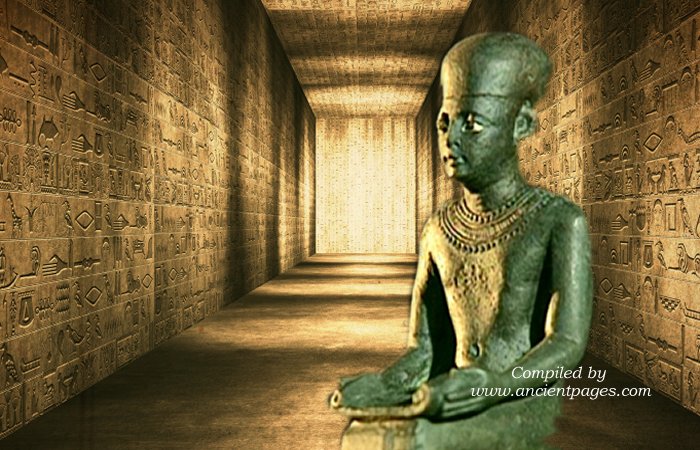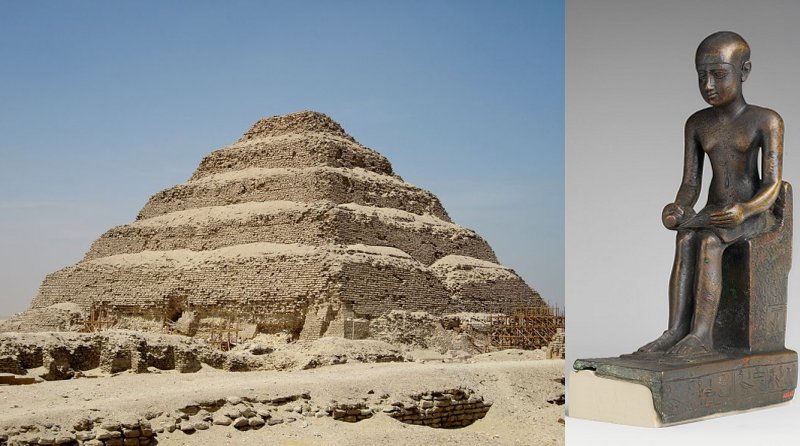Where Is The Tomb Of Imhotep, Pharaoh Djoser’s Magician Hidden?
Ellen Lloyd - AncientPages.com - Egyptologists have unearthed many magnificent tombs. However, there are still burial places belonging to some of the most influential people in Egypt's ancient history that scientists have been unable to locate.
The Land of the Pharaohs refuses to give up some of its secrets. Still, it is a matter of time before archaeologists announce they have finally found the resting place of certain Pharaohs, Queens, high priests, or other individuals who can shed more light on ancient Egyptian history.
The tomb of King Djoser's magician, Imhotep, has not been found yet.
Imhotep was never a Pharaoh, but he was a fascinating individual whom the modern world has praised 3,000 years after his death.
Born in the 27th century B.C. Imhotep became famous for his extraordinary "intelligence and wisdom. Imhotep, or "he who comes in peace," was an ancient Egyptian genius and the great architect of the world's first known monumental stone building, the Step Pyramid at Sakkara." 1
Being the high priest of God Ra and the trusted advisor of the Pharaoh Djoser (reigned c.2630 - c.2611 BC), Imhotep and the Egyptian King "decided to build an enormous mastaba of stone, but at some point, during construction, they built another mastaba on top of the first—and then another on top of the second. They continued this process until they had enlarged the structure into the world's first pyramid. It was what we now call a "step pyramid," consisting of six terraces some 200 feet (60 m) high. Imhotep wanted the tomb to accommodate the Pharaoh's rise into the heavens." 1
Left: The step pyramid of Djoser. Credit: Olaf Tausch - CC BY 3.0 - Right: A statue of Imhotep at the Metropolitan Museum of Art. Credit: Metropolitan Museum of Art - CC0
Egyptologists can today confirm with certainty that Vizier Imhotep was an individual of great importance, and "his high standing at court is indicated in the inscription on the base of a broken-off statue of Djoser where, after the name of the king, Imhotep's titles read:
The Treasurer of the King of Lower Egypt, the First after the King of Upper Egypt, Administrator of the Great Palace, Hereditary Lord, the High Priest of Heliopolis, Imhotep the builder, the sculptor, the maker of stone vases..." 2
However, Imhotep is credited with much more than only the construction of Djoser's step pyramid. Imhotep also worked as a physician, astronomer, and writer during his lifetime. His knowledge was so vast and impressive that he received a divine status. He became worshiped as the god of medicine in Egypt and Greece, where he was identified with the Greek god of medicine, Asclepius.
"He is said to have extracted medicine from plants and treated diseases such as appendicitis, gout, and arthritis." 1
As his fame grew, he became the patron of scribes and was considered God Ptah's son. Few non-royal ancient Egyptians were given divine status, but Imhotep's healing mastery earned him the glory of being worshipped as a deity.
Considering the importance of Imhotep's role in ancient Egypt, one would naturally want to learn more about this fascinating individual. Finding his tomb would be beneficial to Egyptologists. Some attempts to locate Imhotep's burial place have been made, but the whereabouts of his grave are still unknown. Logic dictates Imhotep's tomb should be somewhere in Saqqara, perhaps near Pharaoh Djoser's burial complex.
"A few years ago, the world of Egyptology was more or less electrified by the discovery of what might have been the tomb of Imhotep.
Unfortunately, we can't be more specific than that. The tomb is—or isn't—at Sakkara, one of a group of large Third Dynasty mastabas—those of important people, to judge by size.
Not only were all these tombs thoroughly plundered in antiquity, but they were also virtually destroyed by later builders.
Walter Emery, who first excavated in the area, believed that Imhotep's tomb was somewhere and that it served as the cult center for a Ptolemaic temple dedicated to the deified vizier. Ensuing excavations uncovered a fantastic labyrinth of underground galleries containing the mummies of hundreds of thousands of ibises and baboons. These animals were sacred to Thoth, god of learning, who was regarded as the divine father of Imhotep.
Perhaps one of the desecrated tombs was his. Maybe it is yet to be found. People are still looking." 3
Archaeologists think the northern part of Saqqara is likely home to several high-status tombs, but the area has not been properly excavated. It is a vast region where digging is labor-intensive and time-consuming.
Who knows, maybe archaeologists excavating in Egypt will tell the world anytime soon they have finally unearthed the tomb of Imhotep, or perhaps it will never be found. Treasures of ancient Egypt tend to be hidden for long. Only time can tell.
Written by Ellen Lloyd – AncientPages.com
Updated on Oct 19, 2023
Copyright © AncientPages.com All rights reserved. This material may not be published, broadcast, rewritten or redistributed in whole or part without the express written permission of AncientPages.com
Expand for referencesMore From Ancient Pages
-
 Movie Stars’ Creepy Encounters With The Unexplained
Featured Stories | Oct 28, 2019
Movie Stars’ Creepy Encounters With The Unexplained
Featured Stories | Oct 28, 2019 -
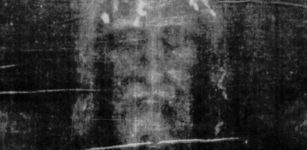 Unknown Energy Source Created The Image On The Shroud Of Turin Scientists Suggest
Archaeology | May 12, 2012
Unknown Energy Source Created The Image On The Shroud Of Turin Scientists Suggest
Archaeology | May 12, 2012 -
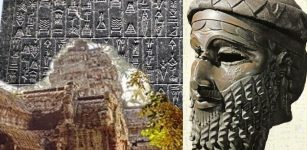 Collapse Of Akkadian Empire Strongly Related To Catastrophic Climate Change
Archaeology | Oct 28, 2019
Collapse Of Akkadian Empire Strongly Related To Catastrophic Climate Change
Archaeology | Oct 28, 2019 -
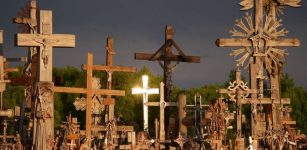 Hill Of 100,000 Crosses In Lithuania Survived Against All Odds
Featured Stories | May 23, 2017
Hill Of 100,000 Crosses In Lithuania Survived Against All Odds
Featured Stories | May 23, 2017 -
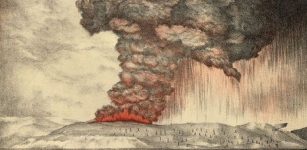 On This Day In History: Krakatoa – Most Dangerous Volcano Erupted- On August 26, 1883
News | Aug 26, 2016
On This Day In History: Krakatoa – Most Dangerous Volcano Erupted- On August 26, 1883
News | Aug 26, 2016 -
 Viking Children Were Buried With Extremely Sharp Knives – Afterlife Tools To Be Used In Valhalla?
Ancient History Facts | Nov 29, 2017
Viking Children Were Buried With Extremely Sharp Knives – Afterlife Tools To Be Used In Valhalla?
Ancient History Facts | Nov 29, 2017 -
 Genes For Learning And Memory Are 650 Million Years Old – Study Shows
Evolution | Jul 19, 2023
Genes For Learning And Memory Are 650 Million Years Old – Study Shows
Evolution | Jul 19, 2023 -
 Riddle Of The Ancient Sarcophagus And Its Strange Properties – Can Science Solve This Mystery?
Featured Stories | Nov 7, 2019
Riddle Of The Ancient Sarcophagus And Its Strange Properties – Can Science Solve This Mystery?
Featured Stories | Nov 7, 2019 -
 Rare 13,000-Year-Old Artifacts And Paleoindian Camp Uncovered in Connecticut Shed New Light On The First Ancient People In America
Archaeology | Mar 18, 2022
Rare 13,000-Year-Old Artifacts And Paleoindian Camp Uncovered in Connecticut Shed New Light On The First Ancient People In America
Archaeology | Mar 18, 2022 -
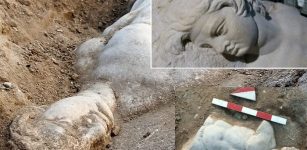 1,800-Year-Old Relief Of Mythological Satyr Figure Under Restoration
Artifacts | Sep 5, 2020
1,800-Year-Old Relief Of Mythological Satyr Figure Under Restoration
Artifacts | Sep 5, 2020 -
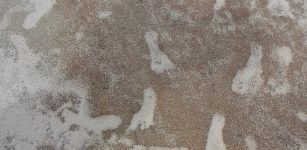 Oldest Fossil Human Footprints In North America Confirmed
Archaeology | Oct 6, 2023
Oldest Fossil Human Footprints In North America Confirmed
Archaeology | Oct 6, 2023 -
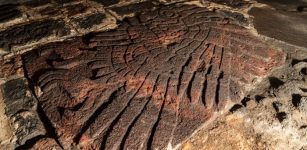 Huge Golden Eagle Relief Made By The Aztecs Discovered At Tenochtitlan
Archaeology | Feb 3, 2021
Huge Golden Eagle Relief Made By The Aztecs Discovered At Tenochtitlan
Archaeology | Feb 3, 2021 -
 On This Day In History: Treaty Of Paris Was Ratified – On January 14, 1784
News | Jan 14, 2017
On This Day In History: Treaty Of Paris Was Ratified – On January 14, 1784
News | Jan 14, 2017 -
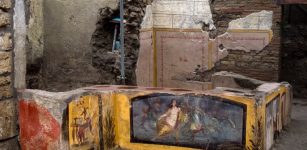 Remarkably Well-Preserved Thermopolium With Frescoes, Food, And Jars Discovered In Pompeii
Archaeology | Dec 28, 2020
Remarkably Well-Preserved Thermopolium With Frescoes, Food, And Jars Discovered In Pompeii
Archaeology | Dec 28, 2020 -
 Extraordinary Discovery Of First Viking Tower In Viborg, Denmark Re-Writes Viking History
Archaeology | Jan 30, 2017
Extraordinary Discovery Of First Viking Tower In Viborg, Denmark Re-Writes Viking History
Archaeology | Jan 30, 2017 -
 Demise Of Cambodian City Angkor Caused By Decline In Occupation And Not Abrupt Collapse
Archaeology | Apr 18, 2019
Demise Of Cambodian City Angkor Caused By Decline In Occupation And Not Abrupt Collapse
Archaeology | Apr 18, 2019 -
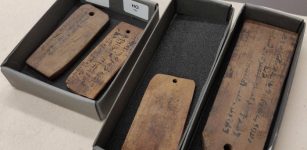 Scientists Reconstruct The Climate Of The Ancient World Using Small Wooden Artifacts And Mummies
Archaeology | Apr 5, 2023
Scientists Reconstruct The Climate Of The Ancient World Using Small Wooden Artifacts And Mummies
Archaeology | Apr 5, 2023 -
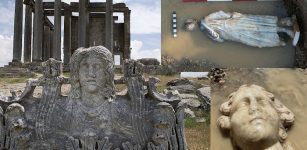 More Greek Gods’ Heads And A Life-Sized Statue Of A Man Unearthed In The Ancient City Of Aizanoi
Archaeology | Dec 28, 2022
More Greek Gods’ Heads And A Life-Sized Statue Of A Man Unearthed In The Ancient City Of Aizanoi
Archaeology | Dec 28, 2022 -
 Celtic Tree Of Life – Portal To Invisible Worlds And Source Of Sacred Knowledge
Celtic Mythology | Jul 26, 2021
Celtic Tree Of Life – Portal To Invisible Worlds And Source Of Sacred Knowledge
Celtic Mythology | Jul 26, 2021 -
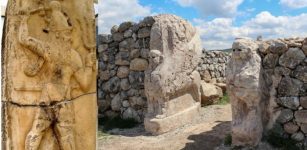 Code Of Nesilim: Ancient Laws Of The Hittites
Ancient History Facts | Jun 14, 2018
Code Of Nesilim: Ancient Laws Of The Hittites
Ancient History Facts | Jun 14, 2018

